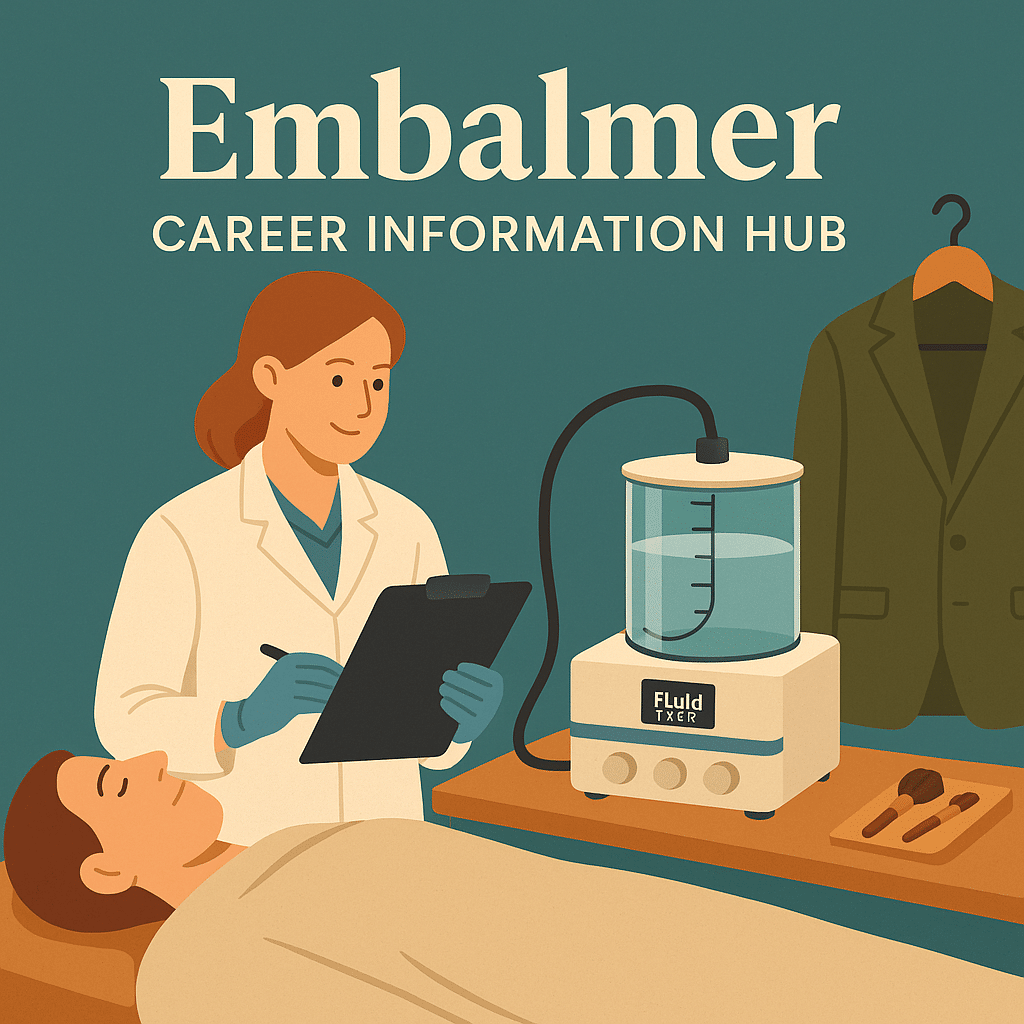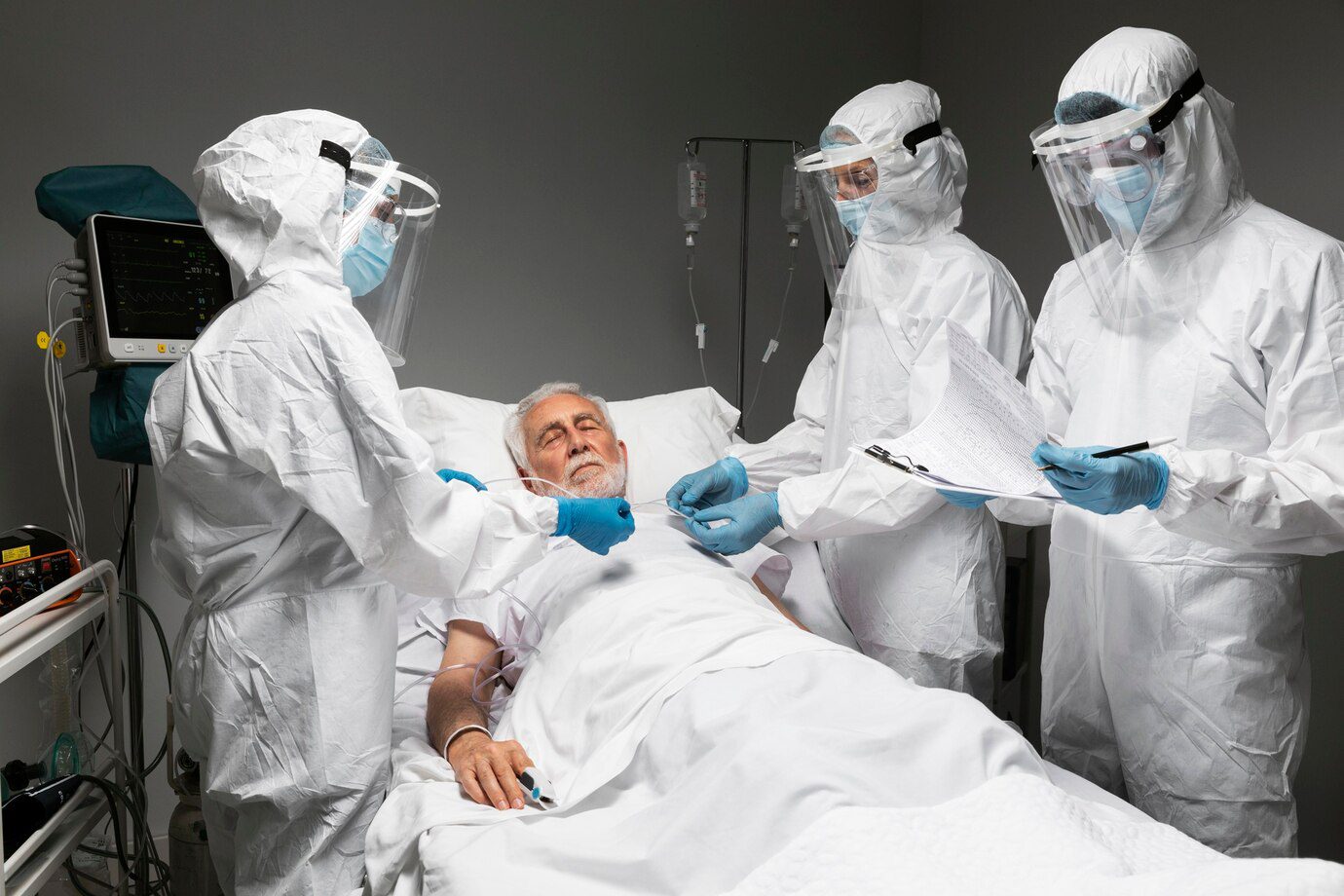Preserving what matters most in the end
The Embalmer Career Information Hub
Embalmers play a critical role in helping families find peace during a difficult time. With a steady hand and deep respect, they prepare the deceased for viewing by preserving appearance, preventing deterioration, and restoring a sense of calm and dignity. If you’re drawn to behind-the-scenes work that blends science, detail, and compassion, embalming offers a unique and meaningful career path.

Key Things To Know
Embalmers combine technical training with deep respect for the human body, ensuring the deceased is cared for with dignity before final arrangements are made.
- They prepare the body for viewing and burial: Using specialized techniques, embalmers clean, preserve, and present the body in a way that supports cultural, religious, or family traditions.
- Licensing requirements vary by state: Some states require a separate embalmer license, while others combine it with funeral director licensing. Most require mortuary school and an apprenticeship.
- It’s both science and art: Embalmers use chemistry, anatomy, and restoration techniques to prepare the body, often working to restore appearance after illness or trauma.
- They work closely with funeral directors: While the roles are different, embalmers are often part of a funeral home team and coordinate closely with directors to ensure seamless care.
- Embalming is not always required: Not every funeral involves embalming. Direct cremation or certain religious practices may not use it, but when chosen, it can make viewings possible.
- It’s a role that requires emotional resilience: Embalmers regularly work with death and must maintain professionalism while being mindful of the families they serve behind the scenes.
- They often work nontraditional hours: Bodies may arrive at all times of day or night, and embalmers may need to be on-call or flexible depending on the case load and funeral schedule.
- There’s a difference between embalming and funeral directing: While many professionals do both, embalming focuses strictly on preparation and preservation. It requires a distinct skill set and training path.
Why Choose This Career?
If you have a steady hand, a scientific mind, and a compassionate heart, a career in embalming offers a unique way to serve families during one of life’s most difficult moments.
- You provide visible peace to grieving families: Embalming allows loved ones to see the person they’ve lost looking peaceful, cared for, and dignified. That visual memory can be a powerful part of the healing process.
- Your work is essential, even if it’s unseen: Though embalmers rarely interact with the public, their behind-the-scenes role is critical. The quality of their work directly shapes the funeral experience.
- You bring together science, skill, and service: This profession blends anatomical knowledge, chemical handling, artistry, and restoration... all in service of honoring a person’s life and legacy.
- There’s growing demand for skilled professionals: As many current embalmers approach retirement, new professionals with strong training and attention to detail are needed across the country.
- You’ll have a sense of purpose in your work: Every case is different, and each one requires your full attention. For those who take pride in doing important work with care and precision, it’s deeply rewarding.
Job Responsibilities
Embalmers are responsible for the preparation, preservation, and presentation of the deceased. Their work is deeply technical, highly detailed, and performed with care and respect.
- Perform embalming procedures: Clean, disinfect, and preserve the body using arterial and cavity embalming techniques, in accordance with legal and health standards.
- Restore and present the body for viewing: Use restorative art techniques to repair physical trauma, illness effects, or disfigurement, ensuring the person appears natural and at peace.
- Handle preparation logistics and documentation: Record details of embalming procedures, complete necessary legal and health forms, and ensure proper identification and chain of custody.
- Coordinate with funeral directors and care teams: Communicate timing, special requests, and case-specific needs to ensure the body is ready for services, cremation, or transport.
- Maintain the preparation room and equipment: Follow health and safety regulations to clean and disinfect tools, surfaces, and embalming machines; monitor chemical inventories and safety supplies.
- Adapt to different cultural and religious expectations: Adjust techniques based on family wishes, spiritual practices, or customs that guide preparation and presentation.
- Handle cases with discretion and emotional sensitivity: Work with professionalism and care when preparing bodies in difficult or traumatic conditions, always mindful of the people they once were and the families they leave behind.
Education and Certification Requirements
Becoming an embalmer requires formal training in mortuary science, hands-on experience under supervision, and state-specific licensing.
- Earn a degree in mortuary science: Most embalmers complete a two-year associate or four-year bachelor’s degree from an accredited mortuary science program, covering anatomy, pathology, chemistry, restorative art, and ethics.
- Complete an apprenticeship or internship: All states require practical training under the supervision of a licensed embalmer. This apprenticeship usually ranges from 1 to 2 years, depending on state laws.
- Pass the National Board Examination (NBE): The NBE includes a science section focused on embalming and preparation. Some states also require a state-specific exam covering laws and regulations.
- Apply for state licensure: Each state has its own licensing board and requirements. Some issue a standalone embalmer license, while others combine it with funeral directing. Continuing education is often required to maintain licensure.
- Stay current on laws, chemicals, and safety protocols: Ongoing training may be required for OSHA compliance, bloodborne pathogen standards, and updates in embalming fluids and restorative techniques.
How To Get Started
Becoming an embalmer takes a mix of formal education, practical training, and commitment to detail-oriented, respectful work. Here’s how to begin.
- Explore the profession early: Shadow a licensed embalmer, volunteer at a funeral home, or visit a mortuary science program to see if the work aligns with your interests and values.
- Enroll in an accredited mortuary science program: Choose a school approved by the American Board of Funeral Service Education (ABFSE). Programs typically include both classroom instruction and lab work.
- Apply for an apprenticeship or internship: Most states require supervised, hands-on experience. Many students begin apprenticeships during or right after school, working under the guidance of a licensed embalmer.
- Take and pass the National Board Examination (NBE): The science section of the NBE covers embalming, anatomy, pathology, microbiology, and related subjects. Study resources are available through most mortuary programs.
- Apply for state licensure: Submit your application and apprenticeship records to your state’s funeral board. If your state requires additional exams or interviews, complete them as part of the process.
- Stay connected and keep learning: Join professional associations, attend conferences, and take continuing education courses to stay sharp, informed, and compliant.
Common Myths
Embalming is one of the most misunderstood roles in funeral service. Here’s the truth behind some of the most common misconceptions.
What Makes Someone A Good Fit
Embalming isn’t for everyone, but for the right person, it can be a meaningful and rewarding path within funeral service.
- You’re detail-oriented and precise: This role involves technical procedures where accuracy matters. Small oversights can affect the final presentation and safety.
- You’re emotionally steady and composed: You’ll work closely with the deceased and must remain calm and professional, even in difficult or emotionally charged situations.
- You’re comfortable with science and anatomy: A solid understanding of biology, chemistry, and physiology is essential to perform embalming procedures safely and effectively.
- You value privacy and professionalism: Embalmers work behind the scenes but carry great responsibility. Families depend on their integrity and discretion.
- You’re okay with irregular hours: The work can involve evenings, weekends, and unexpected calls. Flexibility and availability are important.
- You find meaning in quiet service: Embalmers help families grieve by ensuring loved ones are presented with dignity. It’s purposeful work done out of sight but never without impact.
Articles
Frequently Asked Questions
People often have questions about what embalmers do and how the role fits into the funeral process. Here are a few of the most common.
Disclaimer: The information provided on this website and by Buried in Work is for general informational purposes only and should not be considered legal advice. Please consult with a qualified attorney or subject matter expert for advice specific to your situation.



